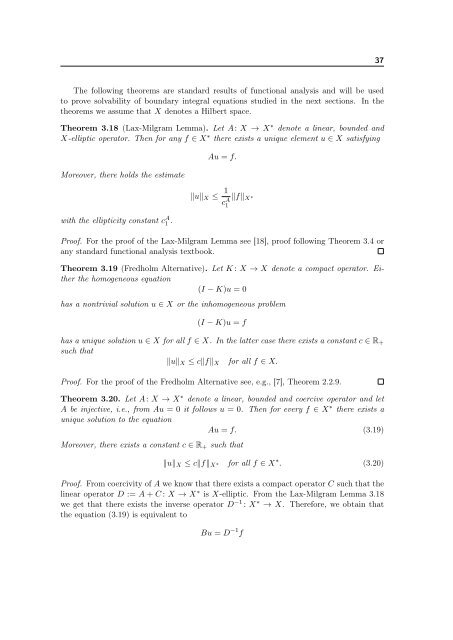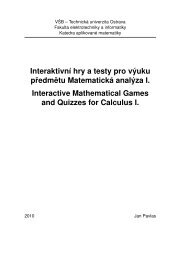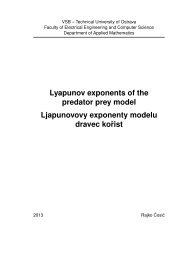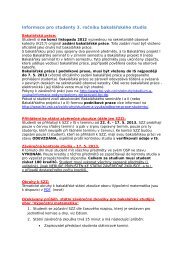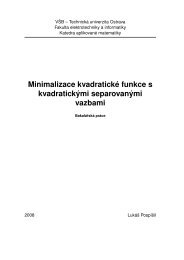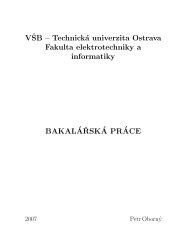The Boundary Element Method for the Helmholtz Equation ... - FEI VÅ B
The Boundary Element Method for the Helmholtz Equation ... - FEI VÅ B
The Boundary Element Method for the Helmholtz Equation ... - FEI VÅ B
Create successful ePaper yourself
Turn your PDF publications into a flip-book with our unique Google optimized e-Paper software.
37<strong>The</strong> following <strong>the</strong>orems are standard results of functional analysis and will be usedto prove solvability of boundary integral equations studied in <strong>the</strong> next sections. In <strong>the</strong><strong>the</strong>orems we assume that X denotes a Hilbert space.<strong>The</strong>orem 3.18 (Lax-Milgram Lemma). Let A: X → X ∗ denote a linear, bounded andX-elliptic operator. <strong>The</strong>n <strong>for</strong> any f ∈ X ∗ <strong>the</strong>re exists a unique element u ∈ X satisfyingMoreover, <strong>the</strong>re holds <strong>the</strong> estimatewith <strong>the</strong> ellipticity constant c A 1 .Au = f.∥u∥ X ≤ 1c A ∥f∥ X ∗1Proof. For <strong>the</strong> proof of <strong>the</strong> Lax-Milgram Lemma see [18], proof following <strong>The</strong>orem 3.4 orany standard functional analysis textbook.<strong>The</strong>orem 3.19 (Fredholm Alternative). Let K : X → X denote a compact operator. Ei<strong>the</strong>r<strong>the</strong> homogeneous equation(I − K)u = 0has a nontrivial solution u ∈ X or <strong>the</strong> inhomogeneous problem(I − K)u = fhas a unique solution u ∈ X <strong>for</strong> all f ∈ X. In <strong>the</strong> latter case <strong>the</strong>re exists a constant c ∈ R +such that∥u∥ X ≤ c∥f∥ X <strong>for</strong> all f ∈ X.Proof. For <strong>the</strong> proof of <strong>the</strong> Fredholm Alternative see, e.g., [7], <strong>The</strong>orem 2.2.9.<strong>The</strong>orem 3.20. Let A: X → X ∗ denote a linear, bounded and coercive operator and letA be injective, i.e., from Au = 0 it follows u = 0. <strong>The</strong>n <strong>for</strong> every f ∈ X ∗ <strong>the</strong>re exists aunique solution to <strong>the</strong> equationAu = f. (3.19)Moreover, <strong>the</strong>re exists a constant c ∈ R + such that∥u∥ X ≤ c∥f∥ X ∗ <strong>for</strong> all f ∈ X ∗ . (3.20)Proof. From coercivity of A we know that <strong>the</strong>re exists a compact operator C such that <strong>the</strong>linear operator D := A + C : X → X ∗ is X-elliptic. From <strong>the</strong> Lax-Milgram Lemma 3.18we get that <strong>the</strong>re exists <strong>the</strong> inverse operator D −1 : X ∗ → X. <strong>The</strong>re<strong>for</strong>e, we obtain that<strong>the</strong> equation (3.19) is equivalent toBu = D −1 f


